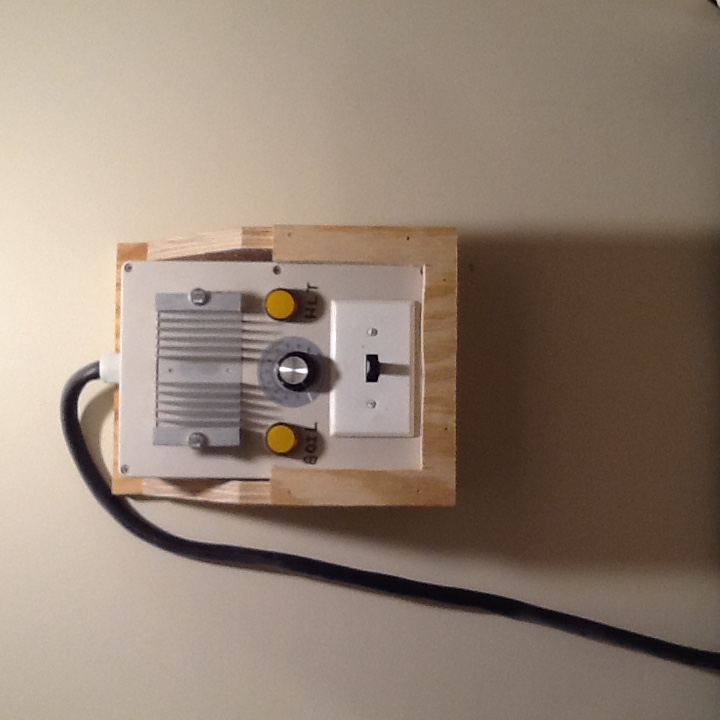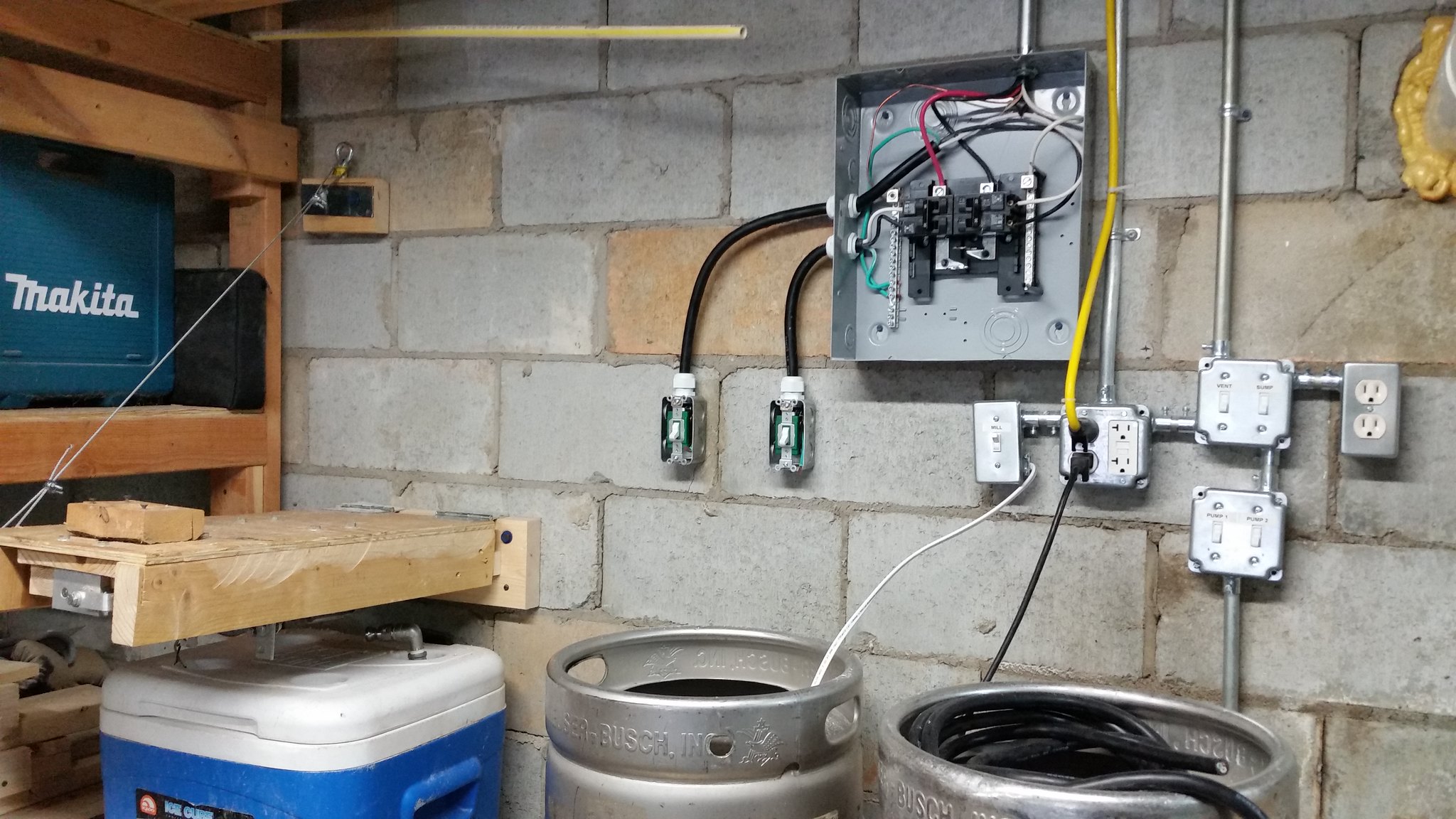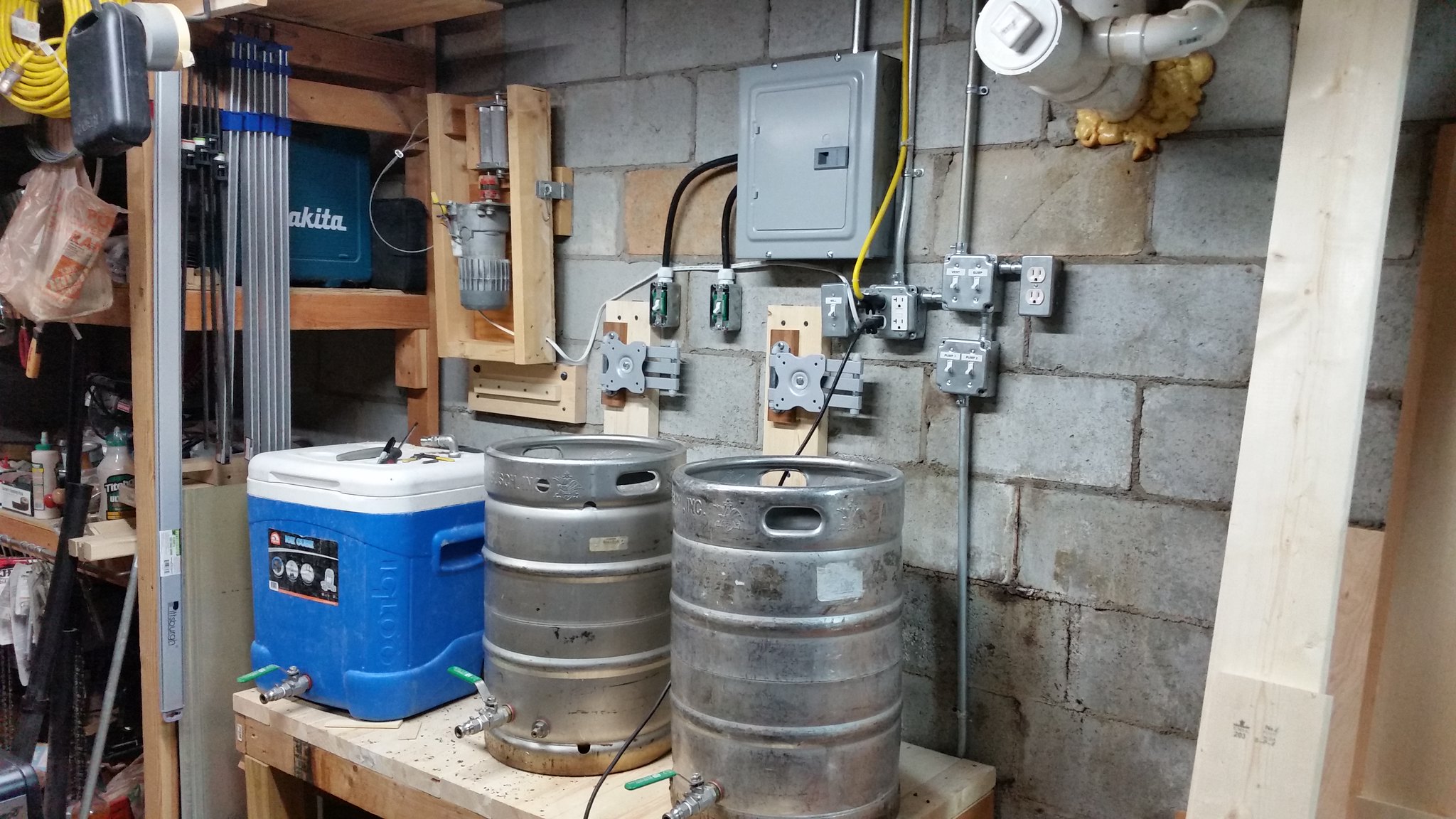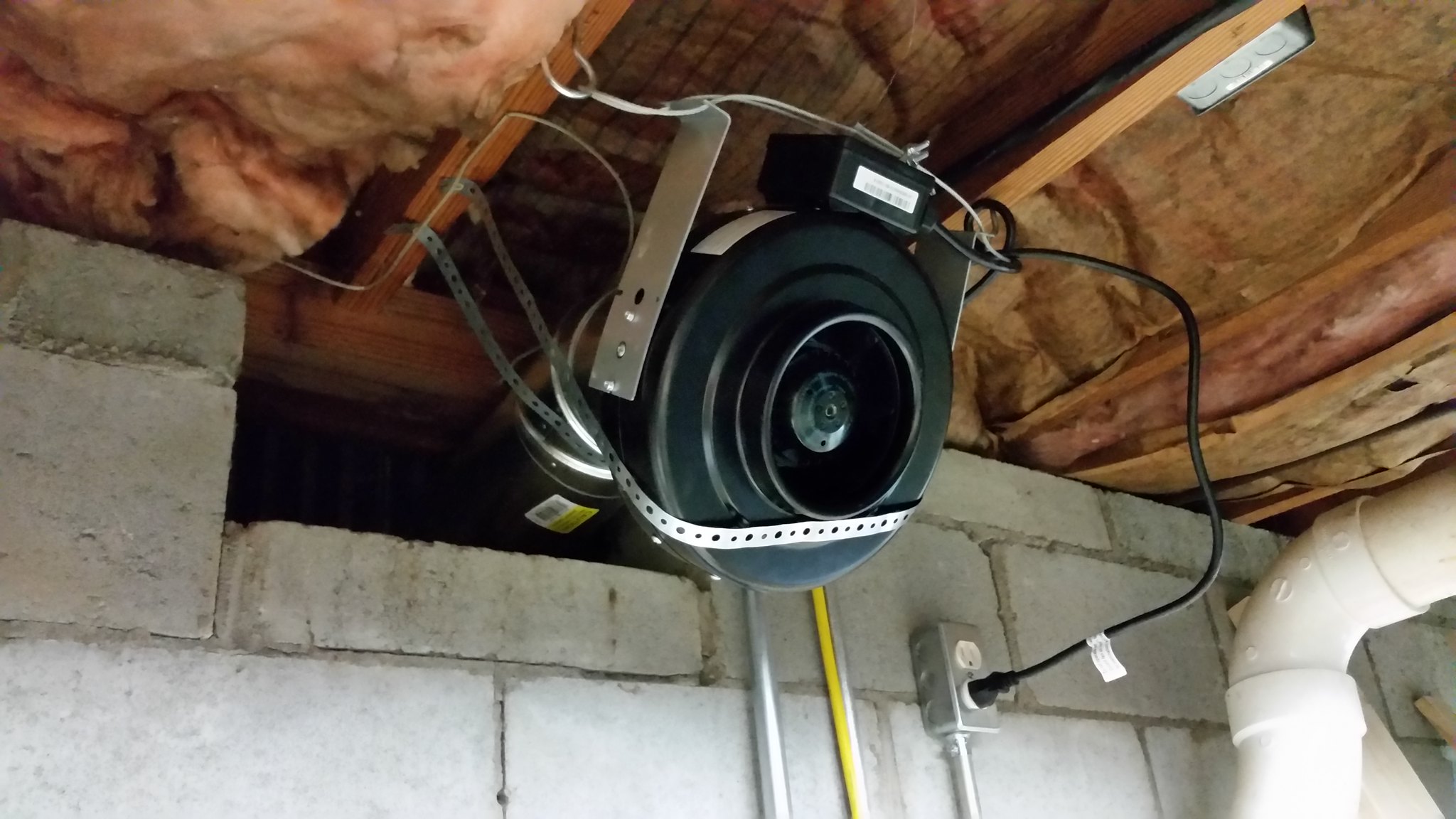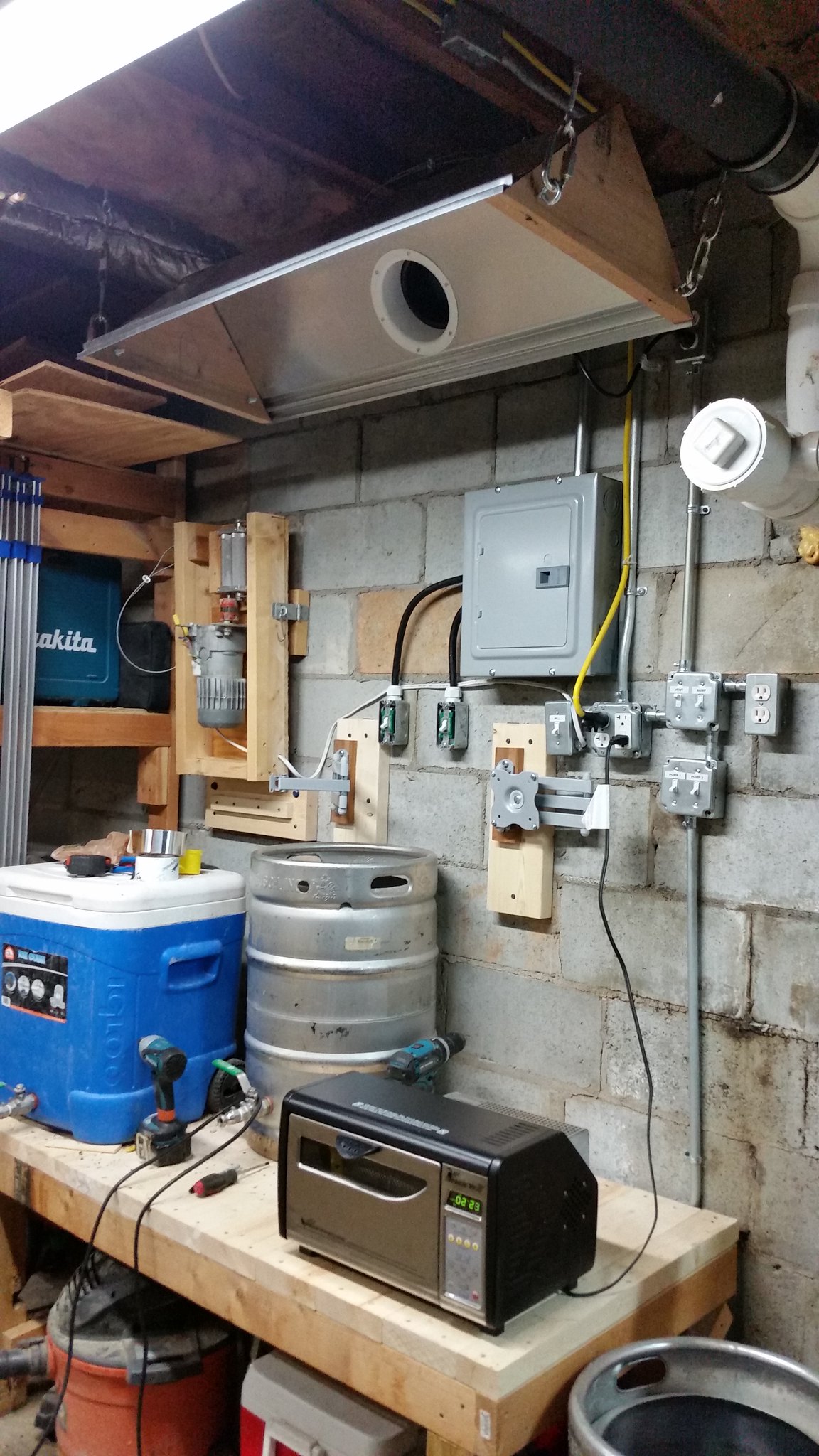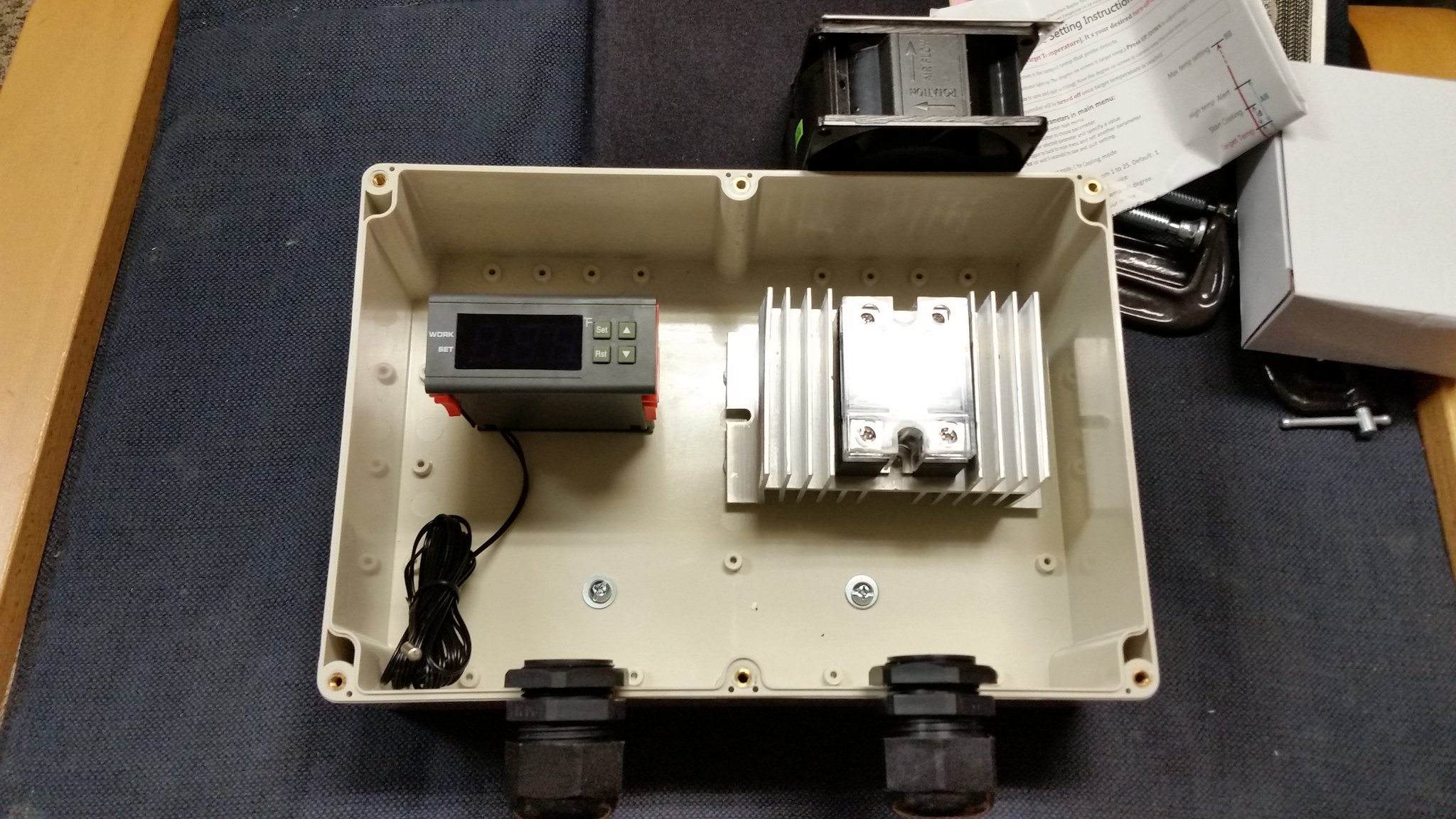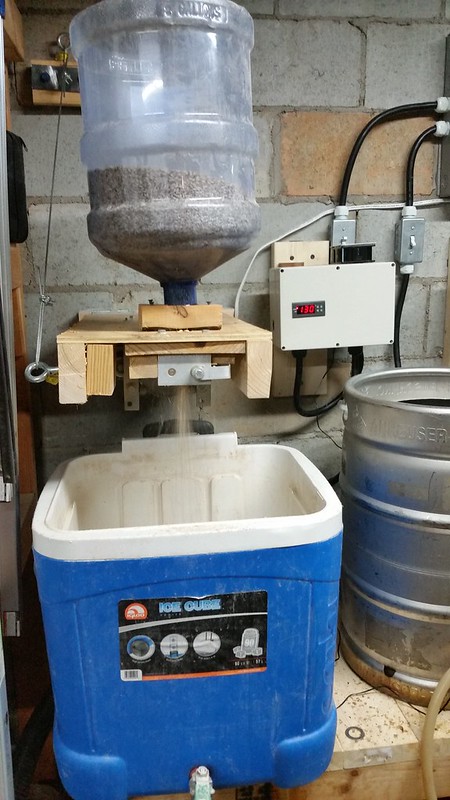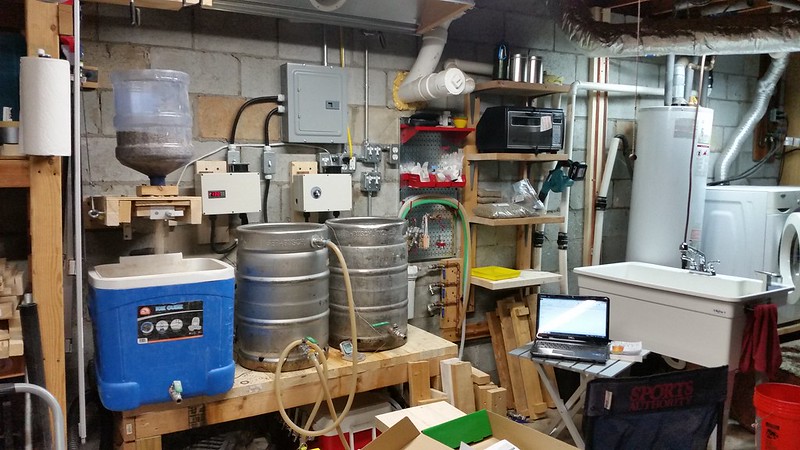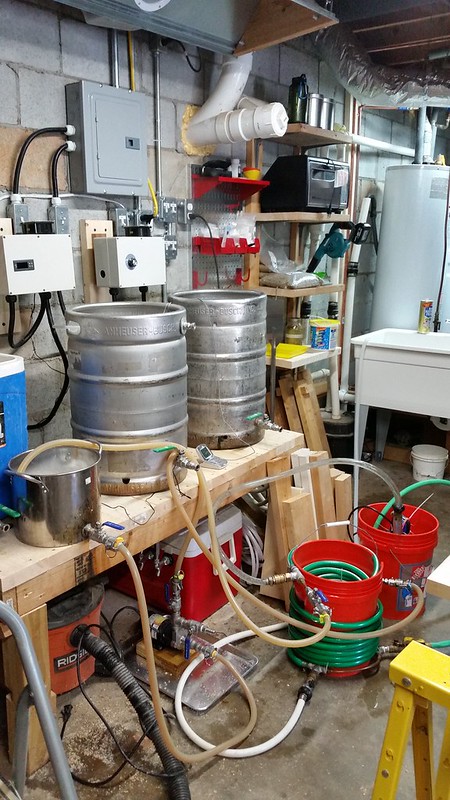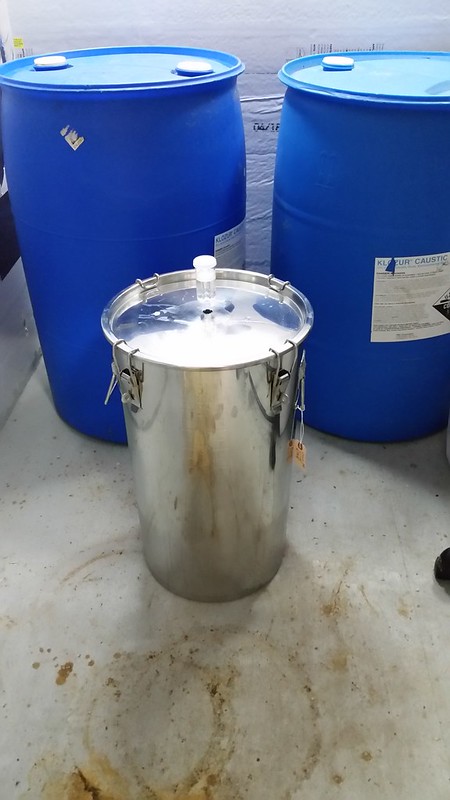All,
I am still in the research phase of everything, and am on a limited budget to do all I want (about $1.5k). For all that I want to do, I want to build the stand, control panels (more on this below), sink, vent, and wiring.
Building the stand won't require much since I think I can repurpose my single tier stand that I use right now with propane, just a few adjustments, and then put plywood on top. Though, I notice many stands use multiple boards rather than plywood. Is there a reason for this?
I will be pulling about 70 ft of 6/3 wiring from the main panel with a 50amp GFCI breaker. Will I need to run it in EMT conduit, or can I simply affix the wiring to the bottom of the rafters? This will be in a basement/garage.
I will bring the wiring down to where I will be brewing into a multigang box, from there, the multi gang box will be filled with three standard 240v wall switches rated for 30amps: http://www.homedepot.com/p/Leviton-...ble-Pole-Switch-White-R62-03032-2WS/100356941
That will then be connected to 30 amp dryer outlets: http://www.amazon.com/dp/B000FP8LEM/?tag=skimlinks_replacement-20 (so each switch controls one of the dryer outlets) mounted on the wall.
There will also be some 120v switches put in as well (most likely in an attached multi gang box) that will be used to switch outlets that control the vent fan, pumps, and grain mill (I plan on wall mounting the grain mill above the mash tun on a hinge).
To cut down on costs and keep things simple, I was thinking about doing separate smaller control panels for the BK and HLT. I was planning on using the kit from stilldragon for the BK: http://stilldragon.com/index.php/diy-controller-kit.html
For the HLT, I am still figuring things out, but was planning on going with a 12vdc temperature controller to control the SSR (most SSRs Im finding are switched with 3-32 vdc). I already have a 12vdc power supply that I could use too. I will most likely use a thermowell in the HLT for the temperature probe
Both the BK and HLT will use 30 amp dryer cords connected to the wall outlets. The reason for the third is so that I can build a second BK in the future and then run a partigyle or dual concurrent boil (once Im done with the HLT), that way I dont have to unplug.
What I am thinking now though, is maybe just hardwire the 240v? I would need to get some 10 gauge wiring, but it could be cheaper, though not as flexible. I like the idea of being able to take down the control panels easily to repair or replace parts.
I know most do one big control panel, but I thought for myself that doing two smaller control panels would be easier and also cheaper. The wall is cinder block, and I was thinking about attaching a 2x8 to it which I would then attach a cheap monitor arm to for each control panel. I am essentially putting part of what most have in their control panel on my wall. I hope that makes sense.
I was also planning on using this fan: http://www.amazon.com/dp/B006Z1JLY4/?tag=skimlinks_replacement-20
And then pipe it and build a cheap vent for the area. The FRP board vent hood build looks like something I could adapt.
I also wanted a big sink: http://www.homedepot.com/p/BigTub-U...PIPHorizontal1_rr-_-100029350-_-203155730-_-N
Which will allow me to clean right there, which I also have a sump pump for the washing machine that is close by that I should be able to drain to.
For the cold water line, I was thinking I should go ahead and sweat some copper and Tee off one of the lines that is overhead. For the hot water though, since I am so close to the washing machine, I was thinking of just getting a washing machine hose long enough so that I can split off of that for the sink. The cold water line I would split a few times to feed the water filter, chiller, and the sink.
For chilling, I have a dual stage counterflow that I built. I was planning on just running an extra garden hose out of the garage from the first stage using groundwater (I dont want to fill up the septic tank), and then the second stage is with a submersible pump and ice water. I also have an immersion chiller that I could use in the winter time.
I also plan on building some cheap shelves on the side which will allow me to keep some things on hand, as well as store my coffee roasting equipment.
For my kettles, I was planning on getting the weldless bulkhead from stilldragon: http://stilldragon.com/index.php/2-triclamp-weldless-bulkhead-fitting.html along with their element guard kit: http://stilldragon.com/index.php/element-guard-kit.html
And then get 5500 watt stainless elements from one of the many vendors online (a lot of them seem to be out at the moment).
So how does this all sound? It is definitely still a work in progress, and I wont be able to start on this for another month or so (other projects I need to finish first, and save up the money as well). I have changed the design in my head many times, but this is about where it stands at the moment. I am open to advice and constructive criticism. From my spreadsheet so far, it looks like I should be able to do all this within my budget, though it will be close after taxes and shipping costs!
I am still in the research phase of everything, and am on a limited budget to do all I want (about $1.5k). For all that I want to do, I want to build the stand, control panels (more on this below), sink, vent, and wiring.
Building the stand won't require much since I think I can repurpose my single tier stand that I use right now with propane, just a few adjustments, and then put plywood on top. Though, I notice many stands use multiple boards rather than plywood. Is there a reason for this?
I will be pulling about 70 ft of 6/3 wiring from the main panel with a 50amp GFCI breaker. Will I need to run it in EMT conduit, or can I simply affix the wiring to the bottom of the rafters? This will be in a basement/garage.
I will bring the wiring down to where I will be brewing into a multigang box, from there, the multi gang box will be filled with three standard 240v wall switches rated for 30amps: http://www.homedepot.com/p/Leviton-...ble-Pole-Switch-White-R62-03032-2WS/100356941
That will then be connected to 30 amp dryer outlets: http://www.amazon.com/dp/B000FP8LEM/?tag=skimlinks_replacement-20 (so each switch controls one of the dryer outlets) mounted on the wall.
There will also be some 120v switches put in as well (most likely in an attached multi gang box) that will be used to switch outlets that control the vent fan, pumps, and grain mill (I plan on wall mounting the grain mill above the mash tun on a hinge).
To cut down on costs and keep things simple, I was thinking about doing separate smaller control panels for the BK and HLT. I was planning on using the kit from stilldragon for the BK: http://stilldragon.com/index.php/diy-controller-kit.html
For the HLT, I am still figuring things out, but was planning on going with a 12vdc temperature controller to control the SSR (most SSRs Im finding are switched with 3-32 vdc). I already have a 12vdc power supply that I could use too. I will most likely use a thermowell in the HLT for the temperature probe
Both the BK and HLT will use 30 amp dryer cords connected to the wall outlets. The reason for the third is so that I can build a second BK in the future and then run a partigyle or dual concurrent boil (once Im done with the HLT), that way I dont have to unplug.
What I am thinking now though, is maybe just hardwire the 240v? I would need to get some 10 gauge wiring, but it could be cheaper, though not as flexible. I like the idea of being able to take down the control panels easily to repair or replace parts.
I know most do one big control panel, but I thought for myself that doing two smaller control panels would be easier and also cheaper. The wall is cinder block, and I was thinking about attaching a 2x8 to it which I would then attach a cheap monitor arm to for each control panel. I am essentially putting part of what most have in their control panel on my wall. I hope that makes sense.
I was also planning on using this fan: http://www.amazon.com/dp/B006Z1JLY4/?tag=skimlinks_replacement-20
And then pipe it and build a cheap vent for the area. The FRP board vent hood build looks like something I could adapt.
I also wanted a big sink: http://www.homedepot.com/p/BigTub-U...PIPHorizontal1_rr-_-100029350-_-203155730-_-N
Which will allow me to clean right there, which I also have a sump pump for the washing machine that is close by that I should be able to drain to.
For the cold water line, I was thinking I should go ahead and sweat some copper and Tee off one of the lines that is overhead. For the hot water though, since I am so close to the washing machine, I was thinking of just getting a washing machine hose long enough so that I can split off of that for the sink. The cold water line I would split a few times to feed the water filter, chiller, and the sink.
For chilling, I have a dual stage counterflow that I built. I was planning on just running an extra garden hose out of the garage from the first stage using groundwater (I dont want to fill up the septic tank), and then the second stage is with a submersible pump and ice water. I also have an immersion chiller that I could use in the winter time.
I also plan on building some cheap shelves on the side which will allow me to keep some things on hand, as well as store my coffee roasting equipment.
For my kettles, I was planning on getting the weldless bulkhead from stilldragon: http://stilldragon.com/index.php/2-triclamp-weldless-bulkhead-fitting.html along with their element guard kit: http://stilldragon.com/index.php/element-guard-kit.html
And then get 5500 watt stainless elements from one of the many vendors online (a lot of them seem to be out at the moment).
So how does this all sound? It is definitely still a work in progress, and I wont be able to start on this for another month or so (other projects I need to finish first, and save up the money as well). I have changed the design in my head many times, but this is about where it stands at the moment. I am open to advice and constructive criticism. From my spreadsheet so far, it looks like I should be able to do all this within my budget, though it will be close after taxes and shipping costs!
Last edited by a moderator:


